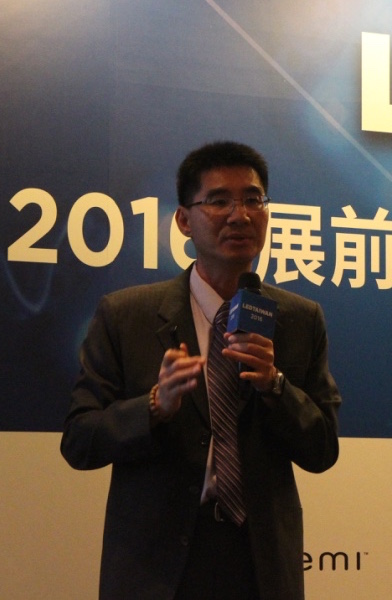(Author: Judy Lin, Chief Editor, LEDinside)
Company representatives from LiteOn, China Electric and Monocrystal urged Taiwanese LED manufacturers to direct resources to develop niche market products, instead of developing products in the overtly competitive general lighting and application markets during a press conference for the upcoming lighting show LED Taiwan at Taipei World Trade Center Club, Taiwan.
Redeploying business strategies will be essential for Taiwanese LED companies that are being slammed by Chinese counterparts in cutthroat price competitions, moreover dwindling profits in traditional backlight and general lighting business are increasingly pressuring companies to divest in niche markets where profits are more lucrative.
About a third of LEDs manufactured in Taiwan are used for lighting applications, and makes up the largest application group by market value of NT $276.8 billion (US $8.62 billion) in 2016, followed by LED backlight, said Rex Chuang, President, Optoelectronics Product Solution SBG of LiteOn citing data compiled from LEDinside and IHS. However, the general lighting market has become so competitive that it is very difficult for investing companies to profit. Lighting giants Philips and Osram’s decision to spin-off their lighting businesses in 2015 signals just how difficult the market has become.
The backlight market totalling NT $121.5 billion is also a struggling market that has been impacted by declined demands from consumer electronic sector, including TVs, notebooks, and others. Aggravating the situation is advancements in backlight technology, where brighter LEDs have reduced LED usage volume in TV screens. Moreover, emerging OLED technology is projected to take some backlight market share from LED sector.
 |
|
Rex Chuang, President, Optoelectronics Product Solution SBG, LiteOn. (All photos courtesy of LEDinside) |
“It can be foreseen that OLED technology impact on small LCD screens and panels will become increasingly evident in the next few years,” said Rex Chuang, President, Optoelectronics Product Solution SBG of LiteOn.
OLED panels properties enables self-illuminating displays that do not require additional LED backlight, as seen in mainstream monitor and panel designs at the moment. The rise of OLED screens in consumer electronics, such as smartphones is expected to impact traditional LED backlight manufacturers market demands. According to Chuang, the backlight market will decline 3% to 5% annually from 2015 to 2018.
Flash LEDs for smartphone application growth is expected to remain flat in the next three years, while LED signage will become a market largely dominated by Chinese players.
Not all is lost, though. Taiwan’s LED market value afloat in 2016. “It is estimated LED market value in Taiwan will reach about NT$ 800 billion (US $24.71 billion) in 2016”, Chuang cited statistics compiled from LEDinside and IHS.
For long term growth, Chuang recommended Taiwanese LED companies should look into automotive lighting, industrial automation, UV LED, IR sensors for wearables, and the surveillance market, which are projected to deliver above 5% CAGR in next three to five years.
 |
|
Fang-Yu Weng, Vice President and Spokesperson of China Electric. |
The rise of IoT and emerging smart home technologies is also expected to propel the smart lighting market sector, said Fang-Yu Weng, Vice President and Spokesperson of China Electric. Spotting the trend, China Electric is collaborating with Taiwanese manufacturers to develop smart lighting products. Weng projected future smart lights would integrate multifunctions, such as surveillance and speakers, and be much more than just lighting products.
Other industry experts recommended a different approach. “Taiwanese LED companies should consider differentiating products by experimenting with different materials, such as silicon carbide (SiC), or develop other applications for niche markets such as lights for endoscopes and surgery,” said Jerry Chen, General Manager, Taiwan, Monocrystal.
In Taiwan most companies are SMEs with limited resources that it would be difficult for them to compete against large international manufacturers in applications where economics of scale is more profitable, analysed a LEDinside analyst. However, niche markets are sectors where conglomerates might not always have an advantage, and is a sector where small companies with highly specialised technologies could succeed.
With global LED market penetration rates at a mere 35%, the LED market is still one that holds great market potential, according to Ching-Yuan Lin of Taiwan Lighting Fixture Export Association. Yet, Taiwanese manufacturers are recognizing the importance of differentiating their market strategies by centering business strategies around niche market applications to stand out from competitors.













